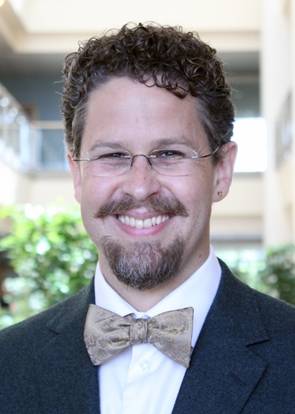After completing his neuroradiology fellowship at Emory University Hospital and arriving at the University of Vermont Medical Center (UVMMC) in 2016, Michael P. Bazylewicz, MD, was eager to apply his head and neck imaging expertise to benefit both radiology and otolaryngology. However, Bazylewicz noticed that the two departments had few opportunities to optimize communication and collaborate. And he suspected that the referring otolaryngologists preferred to practice independently, favoring efficiency over interdisciplinary discussion.
Bazylewicz’s suspicions were not unfounded. William J. Brundage, MD, UVMMC otolaryngologist and head and neck surgeon, acknowledges that the ear, nose, and throat (ENT) specialists sometimes preferred to work autonomously, admitting, “We were a little biased, thinking radiology might slow us down some, but we quickly realized that was entirely wrong. We all provide better patient care when we work together.”
While he sensed that the ENTs were reluctant to collaborate, Bazylewicz, neuroradiologist and assistant professor of radiology, committed to forming a stronger partnership with the department: first, through educational resident lectures and, later, through participation in tumor boards. “I knew radiology could have a positive impact and add significant value to ensure the highest quality of patient care possible,” he says.
Over time, Bazylewicz established credibility with the ENTs, leading to a more cooperative and productive relationship between the two groups. As the radiologists learned how the ENTs used their findings, they recognized an opportunity to significantly help the ENTs provide better patient care by standardizing their reports.

Michael P. Bazylewicz, MD, neuroradiologist and assistant professor of radiology at the University of Vermont Medical Center, took the lead in implementing the ACR’s Neck Imaging Reporting & Data System (NI-RADS) within his department. |
Bazylewicz took the lead in implementing the
ACR’s Neck Imaging Reporting & Data System (NI-RADS), a risk classification system for neck masses in the setting of previous head and neck cancer, to support the ENTs in complex decision-making about treatment. “With the NI-RADS reporting system, the radiologists give me more definitive recommendations with less uncertainty. This confidence translates to greater provider and patient satisfaction, which we were able to achieve through relationship-building with radiology,” says Mirabelle B. Sajisevi, MD, otolaryngologist at UVMMC.
Caring Through Collaboration
Before he arrived at UVMMC, Bazylewicz was already a firm believer that radiology and referring specialties benefit from strong working relationships that include productive dialogue and clear communication. With otolaryngologists and radiologists specifically, he recognized that a supportive, mutually beneficial relationship would optimize each specialty’s expertise. “I knew that neuroradiology could add value to the workup and treatment of ENT patients and that we also had plenty to learn from the ENTs that would increase the quality of our work,” Bazylewicz recalls. “But first, I wanted to find out more about their workflow to see if there was a specific area in which we could contribute more.”
Bazylewicz, who had an interest in resident education, began reaching out to otolaryngology in 2017. He emailed the ENT residency program director and offered to present occasional lectures about head and neck imaging. The department head agreed, and they scheduled presentations, marking the catalyst for conversation between radiology and otolaryngology.
After some correspondence between the departments, Bazylewicz expressed interest in attending the ENTs’ weekly tumor board conferences to better understand their clinical needs and how imaging was integrated into their care processes. The ENTs welcomed him to the conferences, where he presented the imaging findings for each head and neck case and engaged in interdisciplinary discussion with the group.
While Bazylewicz was initially under the impression that the ENTs were uninterested in collaborating, the group appreciated radiology’s involvement and welcomed developing a stronger partnership between the departments. “From the beginning, I received positive feedback from the ENT physicians,” Bazylewicz recalls. “After the tumor board meetings, they’d say, ‘It’s great to have radiology here,’ or, ‘Thanks for contributing.’”
Reporting Realizations
As Bazylewicz built relationships with the ENTs, he gained a better understanding of the role that radiology interpretations play in their decision-making. The goal of imaging was clear: Assess how patients’ head and neck cancer was responding to treatment and look for evidence of recurrent or residual cancer that requires further treatment, both at the primary tumor site and regional lymph nodes in the neck. But the way the radiologists presented their findings often left the ENTs guessing what to do next.
“These patients have often had some combination of chemotherapy, radiation, and/or surgery, which can make the scans more complicated to interpret over time,” Bazylewicz says. “Treatment-related changes often share characteristics with recurrent cancer, and the radiologists would often hedge their interpretations by saying, ‘This finding could represent treatment-related changes or a recurrent tumor,’ without offering ENTs a clear direction forward.”
Adam C. Ulano, MD, assistant professor of radiology, says that when he started at UVMMC, the radiologists’ interpretations of CTs for patients with a history of head and neck cancer were not standardized and could be challenging to understand. “Without uniform recommendations, follow-ups were performed at the specific referring ENT’s discretion,” he says.
To optimize patient care, Bazylewicz explains, radiologists should strive to provide referring physicians follow-up care recommendations based on the scans: For example, does the patient require routine imaging follow-up in one year, or should they undergo follow-up imaging in three or six months? Does the radiologist recommend direct visualization or biopsy of a superficial abnormality? Offering specific direction is key to providing greater value and enhancing patient care, he says.
Introducing NI-RADS
During a tumor board meeting, Bazylewicz learned that the otolaryngologists were sometimes confused about radiology’s interpretations, and he knew the reports needed to be more clear-cut. As part of his fellowship training at Emory, Bazylewicz had learned about NI-RADS, which offers a widely applicable, understandable, and validated template for the management of neck masses on the basis of CT, PET, and MRI features.

Adam C. Ulano, MD, assistant professor of radiology, says NI-RADS eliminates variability for more definitive care recommendations. |
Based on the imaging, the reporting system places findings into categories and links them to specific recommendations. “Reports that hedge positive and negative findings make it harder for clinicians to make definitive decisions about what to do with their patients. NI-RADS, instead, makes it easier for them,” Bazylewicz says.
At a subsequent tumor board meeting, Bazylewicz presented a five-minute summary of NI-RADS to the otolaryngologists, showcasing slides from the
ACR NI-RADS Atlas. Using scans and classifications that provided actionable next steps of care, he demonstrated how standardized report findings could aid their treatment decisions, especially in this complex area of the anatomy. NI-RADS removes ambiguity in the reports, allowing the radiologists to present the ENTs with objective findings that can integrate seamlessly into their complex decision-making process for cancer treatment, Bazylewicz says.
Sajisevi, a tumor board participant, was eager for radiology to implement NI-RADS. “My initial impression of the re-porting system was favorable, as it would provide not only definitive findings of the imaging but also actionable recommendations based on those findings. Prior to NI-RADS implementation, there was more variability between our head and neck providers’ follow-up plans for patients, particularly where imaging findings may be somewhat equivocal,” she explains.
Ulano says that the risk stratification system eliminates the variability for more definitive recommendations by providers. “When clinicians approach indeterminant imaging findings with specific follow-up recommendations in a confident fashion, the approach is reassuring for patients, who gain confidence, too,” he says. “The NI-RADS system helps guide clinicians, provides a framework for imaging follow-ups, and improves the role of radiologists on the care team.”
Implementing the System
When beginning the NI-RADS implementation process, Bazylewicz was sure to first determine whether the ENTs would find value in the standardized approach. From there, he introduced the reporting system to the neuroradiology team. “Radiologists are generally motivated to adapt their interpretations to give clinicians the most benefit they can,” he says, adding that the more certain they are that referring physicians will like a specific grading scale or reporting system, the more likely they are to incorporate it into their workflow.
After the positive interest from the otolaryngologists at tumor board, Bazylewicz went to his division chief, Joshua P. Nickerson, MD, about using NI-RADS at UVMMC. “When he approached me about incorporation of NI-RADS into our head and neck reporting, I was happy to support his idea. He did a great job of connecting with all of the stakeholders, including our ENT colleagues as well as our head and neck oncologists,” says Nickerson, now associate professor of radiology and neuroradiologist at Oregon Health & Science University.
Bazylewicz started a training program for the neuroradiologists that included an in-depth presentation of the ACR NI-RADS Atlas and different scenarios for reporting. He also shared a legend that could be integrated at the bottom of the report to indicate a specific score, and he developed flowcharts to guide the radiologists’ process for NI-RADS recommendations once they identified a finding. Later, the ACR developed official flowcharts for guidance. “The radiologists in my division are very comfortable interpreting head and neck imaging,” Bazylewicz explains. “I just showed them a different way to report the significance of the findings, which are linked to follow-up recommendations within the decision-making tool.”
Using supporting literature from the
Journal of the American College of Radiology and papers from former mentors at Emory, Bazylewicz made multiple presentations to faculty and fellows, answering practical questions about implementation and providing illustrative examples in weekly case conferences. “As his division chief at the time, it was great to see a new faculty member with a real commitment to a quality improvement project put out that kind of effort to improve the care of our patients,” says Nickerson.
Bazylewicz implemented the consistent use of NI-RADS with great success. UVMMC radiologists use the reporting system in well over 90% of head and neck cases, aiding ENTs with definitive findings and actionable recommendations for patients. “In the cases where NI-RADS aren’t used, it is usually an unusual or unclear case,” he explains.

Joshua P. Nickerson, MD, now associate professor of radiology and neuroradiologist at Oregon Health & Science University, supported the use of NI-RADS when he was the division chief at UVMMC. |
After the department initially implemented NI-RADS, Bazylewicz reviewed the team’s reports and sent monthly emails to the neuroradiologists informing them of the compliance rate. In doing so, he would provide positive feedback on a job well done and initiate discussion about questionable cases. Bazylewicz determined that the department as a whole was making appropriate classifications with the NI-RADS system, and otolaryngology agreed. ENTs even used NI-RADS terminology in their clinic notes, demonstrating that it was front-of-mind and useful to their decision-making.
“We quickly became very used to seeing the NI-RADS recommendations at the bottom of reports, and we really appreciate having them to help us develop a focused care pathway,” Brundage says. “It’s been incredibly helpful to have radiology make the call one way or another. Even though it’s not ‘absolute,’ it certainly helps with consistency among different head and neck radiologists.”
Bazylewicz says the standardized reports have become a valuable component of the ENTs’ decision-making process. “We understand that ENTs make decisions based on a number of other factors. We aren’t tying their hands with our recommendations, but we’re simply giving our opinions based on the imaging,” Bazylewicz adds. “This whole process has really opened up the dialogue between our two departments. They now know they have a contact person in radiology who understands their entire workflow and that we are available to help them.”
Collaborating Further
With the NI-RADS reporting system successfully in place, the neuroradiology and ENT teams are continuing to find opportunities to collaborate. Bazylewicz is working with the ENTs on research and educational projects to increasingly strengthen their relationship and their analytical approach to interpretation, including one that further tests and improves the use of the NI-RADS system and its applications.
In an educational endeavor — for the benefit of both ENT and radiology residents — they intend to produce a series of modules that follow head and neck cancer patients over time, highlighting imaging, treatment options, and clinical decision-making. They are also communicating about optimal use of CT-guided fine-needle aspiration to reduce operating room trips.
“Dr. Bazylewicz has been instrumental in fostering our relationship with radiology. He has led multiple collaborative initiatives, including becoming a consistent presence at our head and neck tumor board along with the introduction and implementation of NI-RADS — both of which have direct impact on patient management,” Sajisevi says.
Brundage adds that the collaborative efforts are rewarding. “In the old days, before digital imaging, we used to go to the reading rooms and interact with radiologists a lot more. It’s really nice getting back to hearing other experts’ opinions,” he says. “We certainly learn a lot from radiology, which helps with clinical decisions.”
As UVMMC neuoradiologists continue to collaborate with the ENTs, focusing on clinical cases as well as academic research, their impact on patient care increases, Ulano says. “Standardizing our recommendations with a universal language that unites everyone helps radiologists add value and remain relevant,” he says. “Generally speaking, when clinicians manage patients with independent imaging review, radiologists’ value goes down. Providing follow-up recommendations through NI-RADS has reversed this trend, and now we’re more involved throughout the care process as valuable contributors of the care team.”




